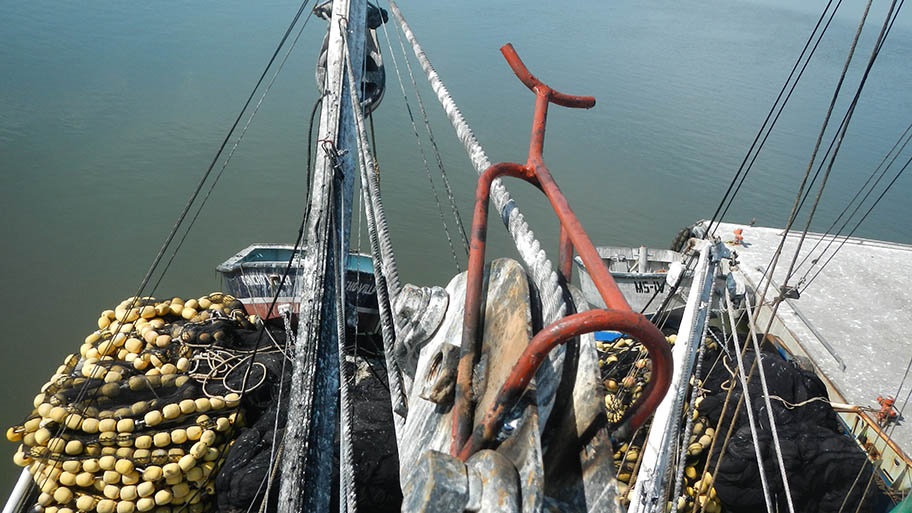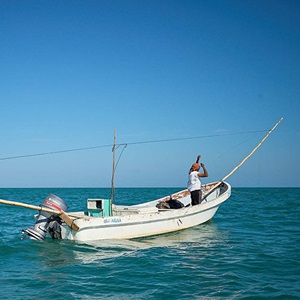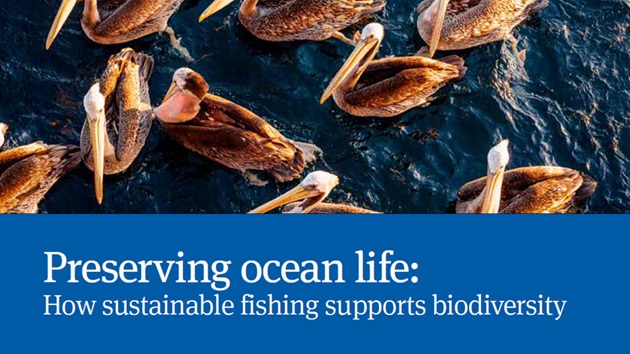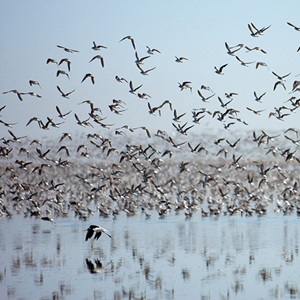Smart vessel modifications help to reduce accidental deaths of protected pelicans from 46 in one year to just six across five years.
Fishery
Southern Gulf of California Thread Herring
Location
Sinaloa, Mexico
Status
MSC certified since October 2016
Fishing and pelicans
The Gulf of California was once described by the marine explorer Jacques Cousteau as "the world’s aquarium". It's a rich ecosystem that is home to 900 fish species and 170 different types of seabird.
One of these birds, known for its impressive plunge diving abilities and capacious throat pouch, is the brown pelican (Pelecanus occidentalis). Brown pelicans are protected under the US Migratory Bird Treaty Act. They feed primarily on small
schooling fish, such as anchovies and thread herring, and can consume almost 2kg of fish per day.
Squadrons of brown pelican often follow fishing vessels along the coastline, diving for fish when the shoals become concentrated, gorging
themselves and not flying away immediately. This puts the pelicans right at the heart of fishing operations, preventing nets from being lifted until they have departed or risking them being entangled in fishing gear.
As such, operating in these waters full of wildlife can be challenging for fisheries. In the thread herring fishery’s 2013-2014 season, 46 pelican deaths were recorded in 201 fishing trips, the equivalent of about one death every five trips. During that time, observer coverage was only present on 6% of the vessels' trips.
Observation and mitigation measures - the “Little deer”
As part of its engagement with the MSC program, the Southern Gulf of California thread herring fishery has adopted mitigation measures and modified its vessels to include a "T" fronted metal structure protecting the pulleys. The fishermen call it "el venadito" for its resemblance to a little deer. This was developed by the fishery to avoid pelicans getting caught in the pulleys during the net recovery.
From 2015 to 2020, observer coverage increased more than five-fold to between 34.4% and 57.6%, ensuring best practice in monitoring and contributing towards a significant reduction in pelican mortalities. In this period, only six pelican deaths were recorded, despite more than 64,000 sightings being reported.

El venadito. © Maz Sardina S.A. de C.V
The mitigation measures implemented by the fleet are applied when birds interact with the fishing operation. This accounts for around 25% of the fishing trips as other outings, such as those at nighttime, do not involve interactions with birds.
The actions are a mix of the innovative and improvised, including water sprayed from the boat to form a "curtain" that deters the birds, sounding horns, and flapping rain jackets when the net is closed. These visual and audio deterrents prevent seabirds from becoming entangled or injured during the setting or hauling of fishing gear on purse seine vessels.
“It is a source of pride for the entire Mexican fishing industry that we have achieved this certification.”
Maz Sardina S.A. de C.V. (assessment client)
-912.tmb-large1920.jpg?Status=Master&Culture=en&sfvrsn=da796765_1)
Fisher deters birds with water © MSC
Read our full report
Related studies and articles

Innovation leads to fewer crabs used as bait
/biodiversity-and-fishing-spotlight.tmb-thumb300.jpg?Status=Master&Culture=en&sfvrsn=7d1e89b7_1)



